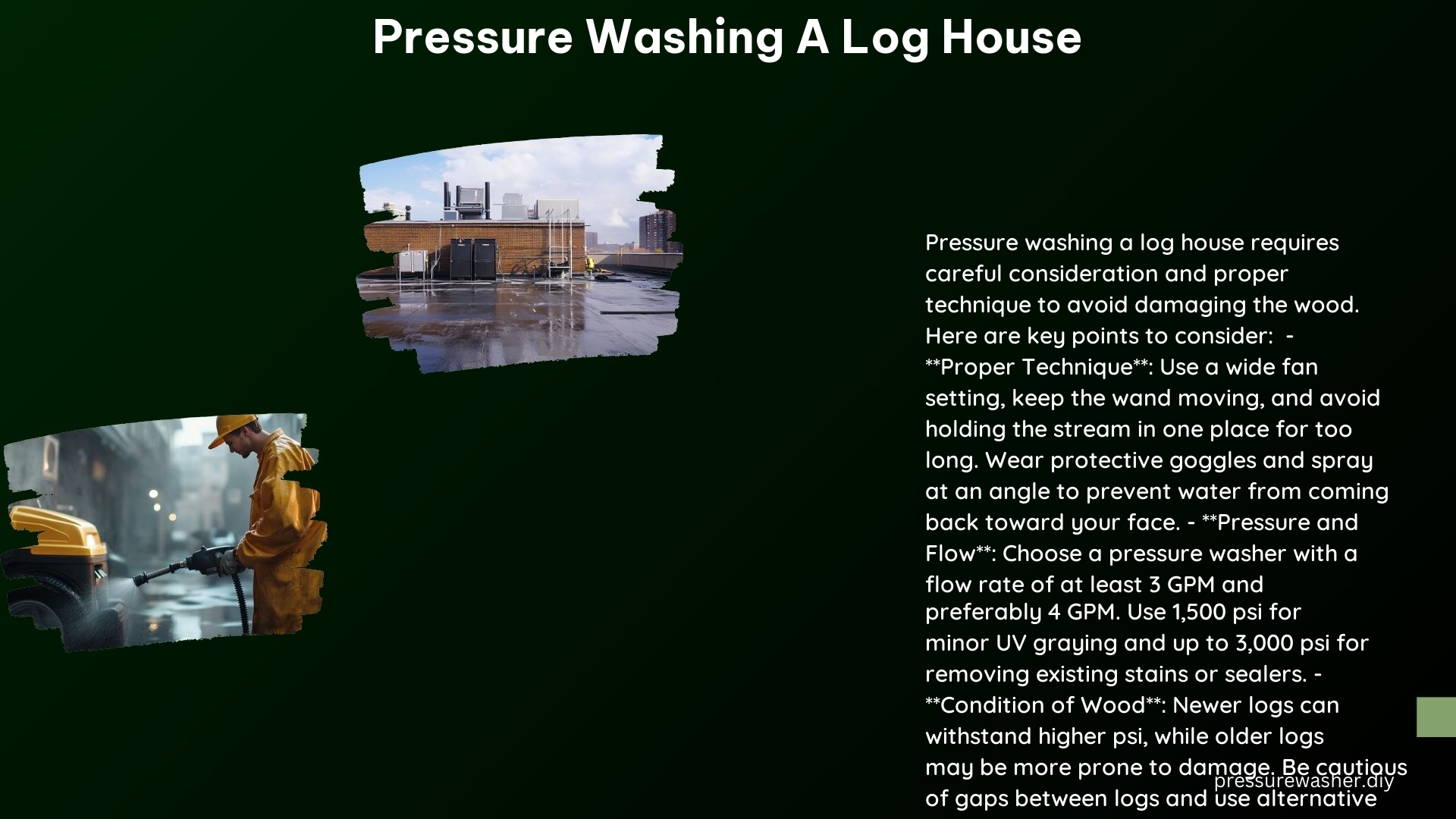Pressure washing a log house can be a delicate task, requiring careful consideration of the techniques and tools used to avoid damaging the wood. This comprehensive guide will provide you with the necessary information to pressure wash your log house effectively and safely, ensuring the longevity and beauty of your home.
Techniques and Precautions
Avoid Using High Pressure
- Never use a pressure washer on log cabin walls, especially if they are made of softwood, as it can damage the wood surface or drive water deep between the logs.
- Use a wide fan setting and keep the wand moving to prevent damage.
- Wear protective goggles and spray at an angle to avoid injury.
- Adjust the pressure washer’s nozzle to a 25-40 degree fan pattern to distribute the water flow evenly and reduce the risk of damage.
- Maintain a distance of 12-24 inches between the nozzle and the log surface to prevent gouging or stripping the wood.
Choose the Right Pressure Washer
- Select a pressure washer with a rate of flow of at least 3 GPM (Gallons Per Minute), preferably 4 GPM, and a pressure setting of 1,500 psi for minor UV graying or 3,000 psi for removing existing stains or sealers.
- Opt for a gas-powered pressure washer with a minimum of 3 horsepower to ensure sufficient power for the task.
- Consider a pressure washer with a built-in detergent injection system to simplify the application of cleaning agents.
Consider the Condition of the Wood
- Newer logs are harder and can withstand higher psi, while older logs may be more susceptible to damage due to sun exposure and weathering.
- Inspect the log surfaces for any cracks, gaps, or areas of deterioration, as these can allow water to seep in and cause further damage.
- Pay special attention to the areas where logs meet, as these are more vulnerable to water intrusion and potential rot.
Additional Tips and Alternatives

Cleaning Agents
- Apply a wood-safe cleaning agent, such as Lime Clean or a similar product, before pressure washing to remove mill glaze, dirt, grease, mold, and mildew.
- Follow the manufacturer’s instructions for dilution and application, and allow the cleaning agent to dwell on the surface for the recommended time before rinsing.
- Avoid using harsh chemicals or detergents that can strip the natural oils from the wood and accelerate weathering.
Alternative Methods
- For older linseed-based oil stains or heavily weathered logs, consider using a chemical stripper before pressure washing to remove the existing finish.
- Cob or sand blasting can be more effective for removing stubborn stains or thick layers of accumulated dirt and grime, but these methods are more expensive and may require professional assistance.
Regular Maintenance
- Regularly hose down the exterior of your log house, paying attention to areas that collect cobwebs, dust, and dirt.
- Use a soft car wash brush with a long handle to gently scrub the surface, taking care not to apply excessive pressure.
- Rinse the surface thoroughly with clear water to remove any remaining dirt or cleaning agents.
- Inspect the logs for any signs of damage or deterioration and address them promptly to prevent further issues.
Technical Specifications
Pressure Washer Settings
- Rate of flow: at least 3 GPM, preferably 4 GPM
- Pressure setting: 1,500 psi for minor UV graying, 3,000 psi for removing existing stains or sealers
Nozzle Distance
- Stand 12–24 inches away from the wood surface to avoid damaging the appearance.
- Adjust the nozzle angle to a 25-40 degree fan pattern to distribute the water flow evenly and reduce the risk of damage.
References
- https://www.familyhandyman.com/article/log-cabin-exterior-tips/
- https://www.mountainhomebuildingproducts.com/blogs/log-home-blog/should-you-pressure-wash-your-log-home
- https://www.youtube.com/watch?v=5qBKjCGfWHw
- https://www.painttalk.com/threads/power-washing-log-home.5491/
- https://www.permachink.com/blog/pressure-washing-your-log-home
